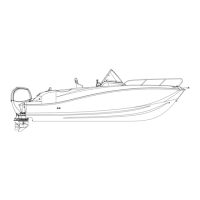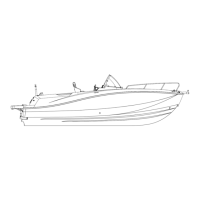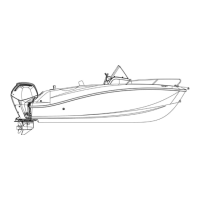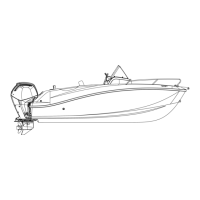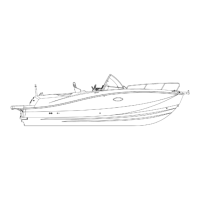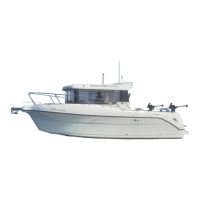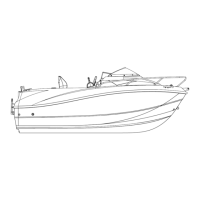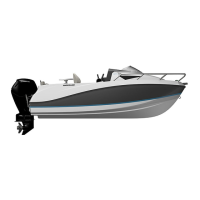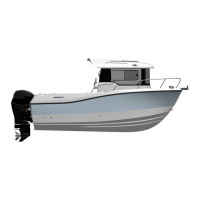Quicksilver 675OP — System & Component Overview and Operaon
20
End of Life Signal
Your CO detector is equipped with an End Of Life (EOL) signal indicang the sensor used in the unit
has reached the end of its service life and must be replaced. The detector contains an electro-
chemical sensor that will last approximately 7 years. Refer to your unit’s operaon manual for EOL
signal indicaon and further informaon and instrucons.
The EOL signal can be deacvated so that it does not alarm. DEACTIVATING THE CO ALARM IS
PERMANENT. REACTIVATING IS NOT POSSIBLE. DO NOT DEACTIVATE UNLESS YOU HAVE A
REPLACEMENT ALARM AVAILABLE TO INSTALL!
REFER TO OWNER’S MANUAL PACKAGE FOR INSTRUCTIONS AND WARRANTY INFORMATION.
6. Bow Anchor Windlass
The anchor windlass located at the bow of the boat assists with the anchoring of your boat by
automacally raising and lowering the anchor. The windlass is operated from the helm.
Operaon
To operate the windlass, the windlass breaker, located by the baery switch panel, must be turned
ON. Operaon of the windlass at the helm is controlled by a momentary switch used to raise and
lower the anchor. Pushing down on the switch will lower the anchor, while pushing up on the switch
raises the anchor.
Manual operaon
In the event that there is a loss of power, the windlass can sll be used to raise or lower the anchor
manually. If there is a loss of power, check the windlass breaker to see if it needs to be reset. If you
reset the breaker and it connues to trip, have your authorized Quicksilver® dealer inspect the
system.
In order to manually operate the windlass and lower the anchor into the water, insert the emergency
handle (provided by the windlass manufacturer) into the star socket located at the top of the gypsy
cover and turn counter-clockwise. This loosens the clutch holding the anchor rode and chain in place
and allows the anchor to be deployed into the water. The speed of the rode can be adjusted by
turning the handle clockwise. To re-engage the clutch and lock the rode from moving, turn the handle
Fumes for the engine(s), generator, LPG stoves, and other
equipment that burns fuel contain Carbon Monoxide.
Carbon Monoxide can kill you. Open all doors, hatches,
curtains, and windows to allow fresh air to circulate.
Never ignore an alarm.
To reduce the risk of Carbon Monoxide poisoning, test the
monitor operaon when not in use for 10 days or more.
Carbon Monoxide Monitor
Power indicator light
Alarm indicator light
Horn
Test buon
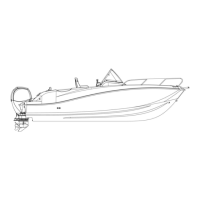
